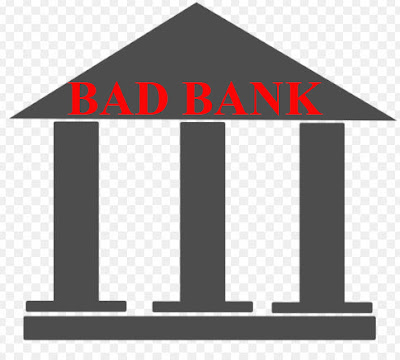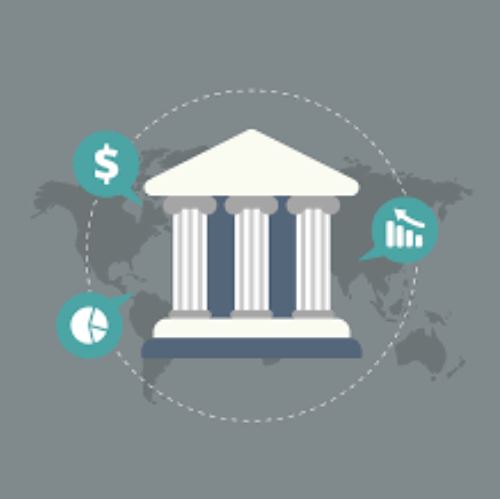"Bad Bank" proposal for India and bad bank list
Why India should not create it.
The banking industry is the core of any economic activity. Banks mostly rotate around the money, which acts as blood in the economy. A healthy banking system can give a boost to an economy and vice versa. Thus having a well-organised banking system becomes a need, and many nations across the globe are taking extra precautions to keep the banking system healthy. But as we know, nothing is perfect. There are many flaws and loopholes in this system which can hurt the economy in the long run.
One of the biggest problems in the banking sector is the bad debt or frequently known as NPAs i.e. Non-Performing Assets. These are the loans given by any financial institution (There are many institutions but in this scenario, we will only consider the banks) to a person or a firm which fails to repay it. These NPAs are hazardous to the banking system. Bad debt should be less than 4% to 5% in a given institution (This the number can vary) above this limit it considers as dangerous. NPAs can restrict the supply of money to the economy as people do not repay loan and economy slowly dragged into a liquidity crunch scenario. There are many rules and guidelines provided by the Govt. to counter NPAs but the number of bad debts was on the rise after implementation of guidelines also. Thus, a new concept has been considered by the Indian government and i.e. Bad Banks.

Let’s understand a Bad Bank
A bad bank is a corporate body which helps banks or financial organisations to isolate liquidity and high-risk assets in the position of these organisations. In simple words, it helps banks and other financial organisations to overcome excessive holdings of NPAs and bad debts by transferring it to Bad Banks. In this system, a country will create a new firm and name it as a Bad Bank and every bank and financial organisation will sell their NPAs to this bank. A bad bank was first used in 1988 by Mellon bank in the USA and after that many nations have started to adopt this strategy, especially after the crisis of 2008. At that time the financial industry was very venerable. It is still questionable about the output of Bad Bank. Economist the community has a polarised opinion regarding it.
Why do we need Bad Bank in COVID-19 crisis?
In the coronavirus crisis, the world economy is suffering. India has also started to feel its effects. GDP of India has touched 11 years low in the January to March quarter. Thus the Indian economy required a strong push to get back on track, but investors are being conscious to invest in banks and in some scenarios they are withdrawing their funds from banks. This is most likely to trigger a Vicious circle where soon banks can feel the liquidity crunch situation. The current problem is being magnified by the NBFC crisis and the fall of some banks. Just before the COVID-19 crisis, The Indian economy was facing a crisis in its banking sector. The top dogs like IL&FS etc. have shocked the nation and investors by the extent of their NPAs. In fact, some private and public banks also found themselves in the middle of a storm in no time. All this crisis is been carry forward in the current crisis and will most likely cost a ton of money for New Delhi to recover from it.
In this situation, economists in the country have proposed a plan to create a Bad Bank. When you analyse the current situation, Bad Bank cannot be that bad of a solution as currently, the nation requires a huge amount of stimulus package and without the help of organised and unorganised sector, New Delhi might not able to execute the plan successfully. As I stated above, investors and people are turning their backs from banks due to the high level of NPAs and in this situation, Bad Bank can be a game-changer. As Bad Banks buys the NPAs from these institutions with less than the face value (More commonly 50% of the total value). With this situation, Banks and Financial institution’s account will get clear and it will attract investors etc. on the other hand, Bad bank gets assets at a much lower price.
If Bad Bank is that good then why am I saying India should not create it?
The first thing which we have to remember, just shifting NPAs from one institution to another will not solve the issue, as NPAs will remain NPAs in Bad Banks also. In fact, Bad Bank has to work hard to revive their money but they may bargain and might not get full money out of those NPAs but it that situation also Bad Bank will be in profit as they have bought that asset at a much lower cost but the remaining amount will be a loss.
Let’s understand it with an example –
Imagine a bank has created an NPA of Rs. 1 Cr. ($142,857 I took $1=Rs.70). The bank sold it to Bad Bank at 50% of its face value i.e. Rs. 50 Lakh ($71,428). After much effort, Bad Bank can recover the money but it only can recover 75% of face value i.e. Rs. 75 Lakh ($107,142). When you calculate Bad Bank has successfully recovered the money which is invested with a small amount of profit i.e. Rs. 25 Laks ($35,714) but we are forgetting the reaming 25% i.e. Rs. 25 Laks ($35,714) which just vanished in thin air. This is a loss. I just took a small figure, just imagining Lakhs of Crores then loss figures can be gigantic. It is also highly possible that Bad Bank will recover less money than this figure can skyrocket and vice versa.
By creating Bad Banks government are protecting banks but we cannot forget that these institutions are the creators of these NPAs, and with this current decision New Delhi will only be able to control output, not input. After the lockdown govt. will try to push the economy by providing cheap loans with this will encourage banks and financial institutions to supply loans to non-eligible people also, which will create more issues in future.
Banks and financial institutions will now be fearless as due to Bad Banks they will be confident as at least 50% of their money will return no matter the condition. This will only amplify the problem. Thus I feel India should not create Bad Banks.
List of Bad Banks:-
Since the inception of the term, Bad Bank the world economies have tried it and the following are examples of it.
1. Mellon Bank:-
Mellon Bank is situated in the USA. In 1988 it created a bad bank which was able to hold bad loans up to $1.4 billion. This figure is gigantic especially at the time of 1988. This bank has dumped around $1 billion worth of bad loans at approximately 57% of its face value. In 1995 the bank dissolved, but it became the first-ever bad bank on the planet.
2. Swedish banks in 1992:-
The next country that constructs a bad bank is Sweden. In early 1990s Sweden's Korona started to face an issue. In fact, in 1992 the top 3 out of 4 major banks were facing trouble of insolvency. To solve the aforementioned issue Stockholm has set up a couple of Bad banks i.e. Retriva and Securum.
3. Finland:-
In the same year, another Scandinavian country faced the same issue. In the 1990s two major banks in Finland collapsed. Helsinki followed in the footsteps of Stockholm and established a couple of bad banks to support its banking system. There are also many countries who have used some kind of bad banks in the past to support its economy. These countries include Belgium, France, Germany, Indonesia, Portugal and Spain etc.Conclusion –
Indian banking systems are facing the issue but the decision taken by New Delhi could hurt the economy in the long run. The government should not focus upon short run it should also consider the long run. As per my opinion, the current problem needs to be solved at an initial level rather than the final level. I am had tried to address this issue in my upcoming research paper named as “Indian NBFCs Raising problem for Business and Economy”. I will update you guys as soon as it gets published. In this paper, I have given my views about how India can tackle this problem.




banking software in india
ReplyDeleteTechnology has irrevocably changed customer expectations and how their needs are met. Traditionally, services have solved specific functional needs; food for example, was a process of purchase and preparation at the very least, or going out to eat, involving distance, time, travel and expense.